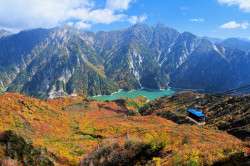
August 18, 2011
The Women who Lifted Japan
The Nadeshiko Japan's World Cup win is not just a game of football
By Metropolis
Originally published on metropolis.co.jp on August 2011
It is said that when a country triumphs in a major sporting event, its production increases, its morale is raised and its people spend more. After the triple travesty of earthquake, tsunami and nuclear disaster (compounded by the actions of TEPCO, the government and most of Japan’s media), Japan desperately needed something uplifting to cling on to.
It was found in an unlikely source: women’s soccer. The notion of women playing soccer—and playing well—is still something many can’t get their heads around. But the game is flourishing around the world, and on July 17, “Nadeshiko” Japan team won the 2011 FIFA Women’s World Cup.
Beyond simple sporting jingoism, this achievement had an effect on Japan on multiple levels.
First, it wiped the nuclear fiasco off the front pages of the papers. Absolutely nothing had given Japan any reason for hope in the previous four months. The country’s tectonic plates have been shaking non-stop, dangerous radioactive particles are being found in more and more places, TEPCO is still largely clueless as to how to get their wrecked nuclear plant under control, thousands of people are still missing and presumed dead, tens of thousands are homeless and have no prospects, and Japan still has no leader or government capable of sorting this mess out.
The Nadeshiko traveled to Germany with the notion that they would play with pride for Japan, they would play with pride as Japanese women and as athletes, and—above all—as representatives of those who had suffered and were still suffering from the consequences of the March 11 quake. On top of this, they vowed to thank the countries of the world for their help, support and assistance following the quake. They paraded around the pitch after games carrying a banner to that effect.
They would not forget—and still have not forgotten. The Nadeshiko will play a charity match against a Nadeshiko League XI team on Aug 19 at the National Stadium in Tokyo to benefit the victims of the earthquake. Six months ago, they would have been lucky to sell a fraction of the seats at the stadium. Now, it’s guaranteed to be a sellout.
For all of the players, the quake is close to their hearts. The Nadeshiko often trained at the JFA’s J. Village soccer center near the Fukushima nuclear plant and TEPCO had a strong team in the Nadeshiko women’s league. That team’s activities are now on hold and it’s hard to see them being reactivated. Japan World Cup stars Azusa Iwashimizu (from Iwate) and Aya Sameshima both played for TEPCO Mareeze, while Japan coach Norio Sasaki is from nearby Yamagata Prefecture. Sasaki showed his players images of the devastation before World Cup games to motivate them. For all of them, the quake was not a thing of the past but an ongoing problem.
As athletes, the triumph in Germany was massively significant. For one thing, they beat the United States in the final, their first win over the Americans after 21 defeats and three draws. But, more importantly, it brought women’s soccer newfound credibility in Japan.
“Football-wise, their success has helped draw attention to the blind side of their sport,” says soccer journalist Kumi Kinohara, who has followed the Nadeshiko every step of the way on their road to victory. “Women’s football in Japan has not been treated so well. Their playing environment is not good when compared to what the men have and most of the women players still have to work while playing football.”

“Japanese football officials and other sports authorities shouldn’t miss this opportunity to make a move for real change and improvement. They should make sure the current interest is not just another ‘boom.’ In addition, the Nadeshiko Japan have to keep winning. To start with, they need to ensure they qualify for the Olympics in next month’s qualifying tournament in China.”
While the national team prepares for more glory, the Nadeshiko League is enjoying a welcome boost to its popularity. There are games in the Kanto area in August and September (check the schedule at www.nadeshikoleague.jp).
Japan’s women players have done the nation proud. Next up: Turning the men’s team into real women.








